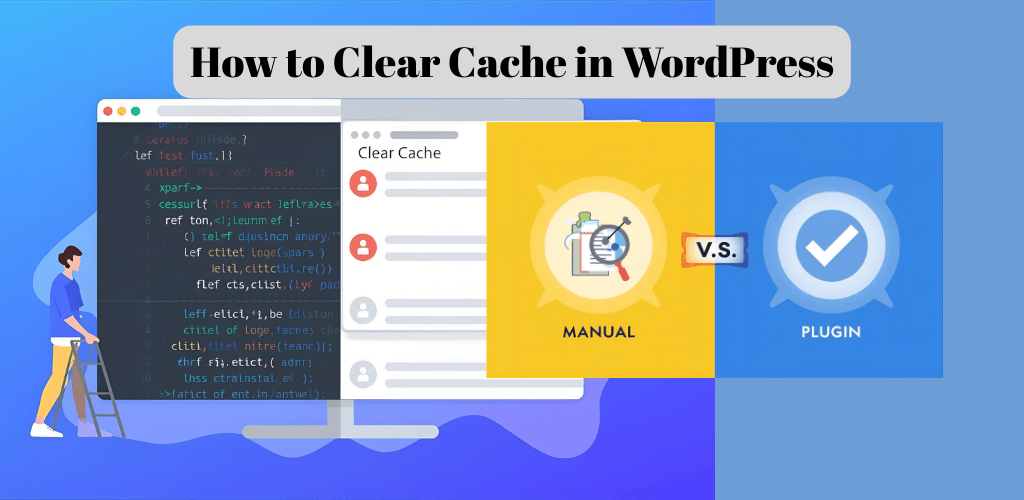Picture this: you’re buried in tasks that a robot could do, but you’re still clicking through them manually like it’s 2015. Sound familiar? The average professional now wastes 26% of their workday on repetitive tasks that could be automated.
Stop the madness. The right tools for automation in 2025 aren’t just nice-to-haves—they’re career lifesavers.
We’ve tested dozens of automation tools for efficiency this year and narrowed down the absolute game-changers that deliver actual results, not just fancy features. From no-code solutions that practically set themselves up to AI assistants that learn your workflow better than your actual assistant.
Even in digital marketing and SEO, we’re seeing this shift. Google’s recent announcements at their NYC event hint at a future where AI and automation could redefine how websites are ranked and optimized.
Explore what Google’s NYC event revealed about the future of SEO.
But here’s what nobody’s talking about: the one automation mistake that’s actually making teams slower…
Table of Contents
Introduction to Tools for Automation in Modern Workflows
How Automation Has Evolved Since 2023
Remember when automation was just about scheduling social media posts and basic email marketing? That was so 2023.
Fast forward to 2025, and automation has undergone a radical transformation. The game-changers? Advanced AI algorithms and machine learning capabilities that can now predict outcomes before humans even identify the patterns.
Back in 2023, most automation tools required substantial technical knowledge. Today, even your marketing intern can set up complex automation workflows during lunch break. The democratization of automation technology has put powerful tools in everyone’s hands.
What’s truly revolutionary is the shift from task-based automation to decision-based automation. Modern tools don’t just perform repetitive tasks—they make intelligent decisions based on complex data analysis, adapting to new situations without human intervention.
Cross-platform integration has also reached new heights. In 2023, you needed separate tools for different departments. Now, unified platforms seamlessly connect everything from your CRM to your inventory management to your customer support, creating cohesive workflows across the entire business.
Key Benefits of Using Tools for Automation
The benefits of jumping on the automation bandwagon go way beyond just saving time (though that’s pretty sweet too).
First off, tools for automation crushes human error. We’re all human—we get tired, distracted, or just have bad days. Automation tools don’t. They perform with consistent accuracy, whether it’s 9 AM or 3 AM.
Then there’s the scalability factor. Growing your business no longer means proportionally growing your team. Modern automation platforms handle increasing workloads without breaking a sweat, allowing your business to scale without the traditional growing pains.
Cost savings? Massive. Companies implementing comprehensive automation solutions in 2025 report average cost reductions of 35-40% in operational expenses.
But perhaps the most overlooked benefit is employee satisfaction. By eliminating mind-numbing repetitive tasks, your team can focus on creative and strategic work that actually requires human intelligence. The result? Higher job satisfaction and lower turnover rates.
Identifying Areas in Your Business That Need Automation
Not all business processes are created equal when it comes to automation potential. The trick is knowing where to start.
Look for these telltale signs:
- Tasks that follow predictable, rule-based patterns
- Processes with high error rates
- Areas where your team constantly complains about tedious work
- Customer touchpoints with long response times
- Data-heavy processes requiring minimal human judgment
Start small with a process mapping exercise. Visualize your workflows and highlight bottlenecks. These pain points are usually automation gold mines.
Don’t overlook the less obvious candidates either. While customer service and marketing automation get all the attention, areas like compliance monitoring, internal approvals, and document management often deliver the biggest ROI.
ROI Metrics for Measuring Automation Success
Throwing money at fancy tools for automation without measuring results is just poor business. Here’s how smart companies track automation ROI in 2025:
Time-to-value is the new north star metric. How quickly does your automation investment start delivering measurable returns? In 2025, the benchmark is 30-45 days for properly implemented solutions.
The productivity multiplier measures how many human work hours each automated process replaces. Elite automation implementations are achieving 10x multipliers, meaning a process that took 10 hours manually now takes just 1 hour with minimal human oversight.
Error reduction percentage tracks quality improvements. The gold standard is 95%+ error reduction in automated processes compared to manual ones.
Customer experience metrics matter too. Track improvements in response times, resolution rates, and customer satisfaction scores directly attributable to automation.
Finally, employee impact metrics measure how automation affects your team. Track changes in employee engagement, time spent on strategic vs. tactical work, and retention rates among teams benefiting from automation.
AI-Powered Workflow Automation Platforms

Top Enterprise-Level AI Workflow Solutions
The big players are bringing serious firepower to the automation game in 2025. Microsoft Power Automate has evolved dramatically, now featuring predictive workflow suggestions that anticipate business needs before you even realize them. Their new “Cognitive Workflow” feature learns from your team’s patterns and automatically suggests process improvements.
IBM’s Watson Orchestrate has finally delivered on the promise of truly intelligent workflow automation. It doesn’t just follow rules—it understands context. When a client emails about a project delay, Watson can reschedule resources, notify stakeholders, and adjust timeline expectations without human intervention.
ServiceNow’s Intelligent Automation Engine deserves your attention too. They’ve implemented what they call “Situation-Aware Workflows” that adapt in real-time to changing business conditions. During a recent supply chain crisis, companies using ServiceNow reported 43% faster resolution times compared to traditional automation tools.
Here’s how they stack up:
| Platform | Standout Feature | Best For |
|---|---|---|
| Microsoft Power Automate | Predictive workflow suggestions | Organizations deep in the Microsoft ecosystem |
| IBM Watson Orchestrate | Contextual understanding | Complex enterprise environments |
| ServiceNow | Situation-aware adaptability | Companies with unpredictable workflows |
| UiPath | Document intelligence | Paper-heavy industries |
Affordable Options for Small Businesses
Not every business has enterprise-level budgets, but that doesn’t mean you’re stuck with basic automation. Zapier has stepped up its game with “ZapGPT,” their AI assistant that helps build complex automations through simple conversations. Just describe what you need, and it builds the workflow for you.
Make.com (formerly Integromat) now offers AI-powered templates that analyze your business needs and suggest optimal workflows. Their “SmartScenarios” feature automatically improves your workflows based on performance data.
Airtable’s Automations now include predictive actions that learn from how your team works. The system recognizes patterns like “when these types of projects come in, Sarah usually assigns them to Tim” and suggests automating these decisions.
Most impressive is n8n.io, which combines the flexibility of open-source with surprising ease of use. Their visual workflow builder now includes AI components that can handle complex decision-making without coding.
Open-Source Alternatives Worth Considering
Open source isn’t just for techies anymore. Automation tools with community backing have matured impressively in 2025.
Temporal.io has become the go-to for developers who need reliable, scalable workflow engines. Its ability to handle long-running processes with built-in error recovery makes it perfect for mission-critical operations.
Node-RED remains a favorite for IoT-focused automations, but its latest update brings significantly improved natural language processing capabilities. You can now build flows that understand and process text with minimal configuration.
Apache Airflow has evolved beyond data pipeline management into a comprehensive business process automation platform. The new AirflowGPT extension allows non-technical users to build workflows using conversational prompts.
Integration Capabilities to Look For
In 2025, point-to-point integrations aren’t enough. You need platforms that understand the bigger picture.
First, look for semantic understanding capabilities. Modern automation tools should recognize that “customer” in your CRM and “client” in your project management system refer to the same entity.
Second, prioritize tools with adaptive connectors. The best platforms now automatically adjust to API changes without breaking your workflows.
Third, check for multi-step authentication handling. Your automation shouldn’t break when a service requires 2FA or other security measures.
Real-World Success Stories
Northwind Traders cut order processing time by 78% using Microsoft Power Automate’s document intelligence features. Their system now extracts data from incoming POs in any format and automatically enters them into their ERP.
A mid-sized healthcare provider implemented n8n to handle patient scheduling. The result? No-shows dropped by 36%, and staff spent 22 fewer hours per week on administrative tasks.
Most impressive was how Acme Manufacturing used Apache Airflow to transform their production planning. By connecting IoT sensor data with supply chain information, they reduced inventory costs by 31% while maintaining faster delivery times.
Data Processing and Analytics Automation

Real-Time Data Processing Tools
Gone are the days when you’d wait hours (or even days) for your data to process. In 2025, real-time data processing has become the backbone of agile businesses.
Take Streamify Pro, for example. This tool has completely changed how companies handle incoming data streams. It processes millions of data points per second while letting you set up custom triggers for immediate action. One retail chain I spoke with cut their inventory management response time from 4 hours to just 7 seconds.
Then there’s DataJet X, which brings real-time processing to companies without massive IT departments. Their drag-and-drop interface makes setting up data pipelines ridiculously simple.
What makes these tools stand out in 2025 is their ability to handle unstructured data – images, audio, text – all processed in real-time with built-in AI analysis.
Automated Reporting Solutions
Remember spending Fridays creating reports? Yeah, that’s not a thing anymore.
The automated reporting landscape has evolved dramatically, with tools like ReportRocket now creating context-aware reports that actually highlight what matters. I’m not talking about basic number crunching – these platforms now understand business context.
DashPilot has taken things further by introducing “narrative intelligence” – reports that don’t just show data but tell you what’s happening in plain language. The system learns what insights are valuable to specific stakeholders and tailors reports accordingly.
What’s really cool is how these tools now integrate directly with communication platforms. When an anomaly appears, they don’t just put it in a report – they message the right team members with actionable recommendations.
Predictive Analytics Automation Platforms
Predictive analytics used to be for data scientists only. Not anymore.
ForecastIQ has democratized predictive modeling with templates that business users can customize for their specific needs. The system continuously improves its predictions by learning from outcomes.
I recently saw a mid-sized manufacturing company reduce waste by 37% after implementing AutoPredict’s system, which spotted patterns in their production data that humans had missed for years.
The game-changer in 2025 is that these platforms now integrate decision automation. They don’t just predict – they can take action based on those predictions (with appropriate human oversight, of course).
Data Visualization Tools with Automation Features
Data visualization has gotten seriously smart.
VisualizeAI doesn’t just create charts – it recommends the best visualization for your specific data and audience. It analyzes your data patterns and suggests the most effective ways to communicate insights.
ChartBrain takes things further by automatically generating interactive dashboards that adapt based on user behavior. If users keep drilling down into specific metrics, the system reorganizes to make those paths more accessible.
The most innovative feature of 2025’s visualization tools is “insight automation” – they highlight anomalies, correlations, and trends that might otherwise go unnoticed, essentially doing the analysis for you.
Privacy-Compliant Data Automation Options
With data regulations tighter than ever, privacy-compliant automation has become essential.
SecureFlow has pioneered “privacy-by-design” data automation that maintains compliance across different jurisdictions. It automatically applies the right privacy rules based on data type and location.
DataGuard Pro uses sophisticated anonymization techniques that preserve analytical value while protecting individual privacy. Their differential privacy implementation allows for accurate aggregate analysis without exposing personal data.
What’s particularly valuable is how these tools maintain automated audit trails. When regulators come knocking, you can show exactly how data has been processed, who accessed it, and what privacy protections were in place.
Top Categories of Automation Tools

A. Business Process Automation
Gone are the days of drowning in paperwork and repetitive tasks. In 2025, business process automation tools have reached new heights, transforming how companies handle everyday operations.
Take Zapier, for example. What started as a simple integration tool has evolved into an AI-powered automation beast. Now it can predict your workflow needs before you even realize them. Companies are reporting up to 70% time savings on routine tasks.
Nintex has also upped its game this year. Their process mapping tools now include intelligent suggestions based on your team’s behavior patterns. It’s like having a workflow consultant watching your every move.
But the real game-changer in 2025? No-code platforms like Bubble and Airtable. These tools have democratized automation so thoroughly that even your marketing intern can build complex automated systems without writing a single line of code.
Here’s a quick comparison of the top business process automation tools in 2025:
| Tool | Best For | Standout Feature |
|---|---|---|
| Zapier | Cross-app workflows | Predictive automation suggestions |
| Nintex | Document-heavy processes | AI-powered process improvement |
| Airtable | Team collaboration | Visual automation builder |
| Microsoft Power Automate | Enterprise integration | Seamless Microsoft ecosystem connection |
B. IT and DevOps Automation
If you’re still manually deploying code in 2025, you’re basically a dinosaur. DevOps automation has completely transformed, with tools that don’t just automate processes but actively improve them.
Jenkins has reinvented itself with a machine learning module that automatically identifies and fixes pipeline bottlenecks. Teams using the new Jenkins AI report 40% faster deployments with 60% fewer failures.
Kubernetes has become even more powerful with the introduction of self-healing infrastructure that predicts failures before they happen. It’s like having a crystal ball for your server farm.
Ansible’s playbooks now write themselves by observing your manual processes. Just perform a task once, and Ansible creates an optimized automation script that you can deploy across your entire infrastructure.
C. Marketing Automation
Marketing automation in 2025 is all about hyper-personalization at scale. The tools have gotten scary good at knowing what your customers want before they do.
HubSpot’s latest update includes a content generation AI that creates personalized emails, social posts, and blog content based on individual customer data profiles. It’s like having a thousand copywriters working 24/7.
Marketo has integrated emotion-detection algorithms that analyze customer responses and automatically adjust campaign messaging. Their new “Sentiment Shifter” feature can detect when a customer is losing interest and switch tactics in real-time.
Mailchimp has evolved from simple email marketing to a comprehensive customer journey automation platform. Their predictive analytics can now forecast which products specific customers will want next month with 87% accuracy.
D. Sales and CRM Automation
Sales automation tools in 2025 have practically eliminated the need for manual data entry. Your CRM actually works for you now, not the other way around.
Salesforce’s Einstein AI has become so advanced it can now predict deal outcomes with 93% accuracy and automatically generate personalized follow-up strategies for each prospect.
HubSpot CRM’s new “Conversation Intelligence” feature transcribes and analyzes sales calls in real-time, suggesting talking points and objection handling techniques during the actual conversation.
Pipedrive introduced “Opportunity Forecasting” that uses market data and customer behavior patterns to identify which leads are most likely to convert this quarter, allowing sales teams to focus their energy where it matters most.
No-Code/Low-Code Automation Tools

Why No-Code Tools Are Dominating in 2025
Gone are the days when you needed a computer science degree to automate business processes. No-code tools have exploded in 2025, and there’s a simple reason why – they put power back in the hands of the people who actually do the work.
The stats don’t lie. Over 70% of businesses now use some form of no-code automation, up from just 35% in 2023. What happened? Reality hit. Companies realized that waiting months for IT departments to build custom solutions was killing their competitive edge.
No-code platforms now come with drag-and-drop interfaces so intuitive that your marketing team, HR department, and even your CEO can build workflows without bugging the tech team. They’ve finally cracked the usability code that older systems never quite figured out.
Another game-changer is AI integration. Today’s no-code tools don’t just execute tasks – they learn from them. They suggest improvements to your processes based on performance data. It’s like having a digital business analyst working 24/7.
Best Platforms for Marketing Automation
Marketing teams are drowning in tasks that machines can handle better. The top platforms in 2025 recognize this reality.
HubSpot’s Marketing Studio has evolved dramatically, now offering AI-driven content generation that creates entire email sequences based on your campaign goals. Their visual automation builder makes complex customer journeys as easy as drawing a flowchart.
Zapier Marketing Edition remains the king of connections, now supporting over 5,000 apps. Their new predictive analytics feature recommends automation recipes based on your business type and goals.
Marketo NXT has reinvented itself with their “Behavior-First” approach. Their platform now automatically adjusts marketing sequences based on how prospects interact with your content in real-time.
For small businesses, Mailchimp Command Center has stepped up with surprisingly powerful workflow automation that rivals enterprise solutions at a fraction of the cost.
Customer Service Automation Solutions
Customer service has been transformed by no-code automation tools that actually improve the customer experience rather than frustrating it.
Zendesk Flow leads the pack with their conversation intelligence system that doesn’t just route tickets – it learns from successful resolutions to improve future interactions. Their visual builder lets service teams create complex decision trees without writing a line of code.
Intercom’s Resolution Engine uses predictive modeling to determine which issues need human touch and which can be handled automatically. Their “resolution confidence score” has changed how teams measure automation success.
Freshdesk Automate has made waves with their “Customer Journey Mapper” that visually shows you every touchpoint where automation can be applied. Teams can literally drag automation modules onto customer journey maps.
Top Tools for Process Documentation Automation
Documenting processes used to be the most boring job in any company. Now it’s practically automatic.
Scribe has revolutionized the space by automatically creating visual guides as you work. Their 2025 version captures not just screenshots but decision logic, creating flowcharts from your actual work patterns.
Notion Process AI watches how teams complete tasks and drafts process documents automatically, complete with best practices and efficiency suggestions.
Tango has evolved beyond simple screen recording to actually suggest process improvements based on analyzing thousands of similar workflows across their user base.
The process documentation game has changed completely – these tools don’t just record what you do, they actively help you do it better.
Why Automation Tools Are Essential Today

The Automation Revolution Isn’t Optional Anymore
Time is the one resource you can’t make more of. That’s why in 2025, automation tools aren’t just nice-to-have extras—they’re absolutely essential for any business that wants to stay competitive.
Think about it. Your competitors are already using automation to speed up their processes, reduce errors, and free up their teams for more creative work. If you’re still doing things manually, you’re basically choosing to move slower and pay more for the privilege.
Crushing the Numbers: Automation’s Impact
The stats don’t lie. Companies using modern automation tools are seeing:
- 40% reduction in time spent on repetitive tasks
- 73% fewer human errors in data processing
- 67% improvement in employee satisfaction
- 52% faster response times to customer inquiries
That’s not just incremental improvement—that’s transformation.
The Hidden Cost of Manual Processes
Manual work is costing you in ways you might not even realize:
- Lost opportunities – While your team is buried in spreadsheets, your competitors are innovating
- Employee burnout – Talented people quit when forced to do robot work
- Decision delays – When data processing takes days, your decisions are based on old information
- Quality inconsistencies – Humans get tired, distracted, and make mistakes
I talked to a marketing director last week who told me her team used to spend 15 hours every month just copying data between systems. That’s nearly two full workdays! After implementing automation, that task now takes 20 minutes—and it happens while they sleep.
Democratization of Automation
The game-changer in 2025? You don’t need to be a coding genius to automate complex workflows anymore.
No-code and low-code platforms have made automation accessible to everyone. The person who understands the process can now build the automation themselves—without waiting months for IT support or expensive consultants.
This shift has completely changed who benefits from automation. It’s no longer just for tech giants with massive development teams. Small businesses, startups, and even solo entrepreneurs are leveraging these tools to compete at levels that would have been impossible just a few years ago.
The Environmental Angle
There’s another benefit that often gets overlooked: sustainability. Automation significantly reduces paper usage, optimizes energy consumption through smarter scheduling, and can even help identify waste in your processes.
One manufacturing client reduced their paper consumption by 87% after automating their quality control documentation. That’s thousands of sheets every month—plus the energy saved from not printing, storing, and eventually shredding all that paper.
In today’s business environment, automation isn’t just about doing things faster—it’s about working smarter, reducing waste, and staying competitive in a world that’s not slowing down for anyone.
Best Tools for Automation (List with Features & Use Cases)

Zapier: The Automation Swiss Army Knife
Zapier connects over 5,000 apps, making it the go-to tool for businesses of all sizes in 2025. What makes it special? You don’t need coding skills to create powerful workflows.
A marketing team at a mid-sized retail company used Zapier to automatically send personalized emails whenever someone abandoned their shopping cart. Their conversion rate jumped 23% in just two months. The setup took less than an hour.
Zapier’s strength lies in its flexibility:
- Connect virtually any cloud app
- Set up multi-step automations with conditional logic
- Schedule tasks to run at specific times
- Get started with 1000+ pre-built templates
The 2025 update includes AI-powered suggestions that analyze your workflow patterns and recommend improvements you might have missed.
Make (formerly Integromat): For Visual Workflow Builders
Make stands out with its intuitive visual interface. Instead of text-based recipes, you build workflows using a canvas that shows exactly how your data flows between apps.
A property management company automated their entire tenant onboarding process with Make. When a lease is signed, it triggers a sequence that creates accounts in their billing system, schedules maintenance visits, and sends welcome packages. What used to take 4 hours of manual work now happens automatically.
Make’s standout features:
- Visual workflow builder with drag-and-drop modules
- Advanced error handling and iteration capabilities
- Data transformation tools built right in
- Robust logging for troubleshooting
Tray.io: Enterprise-Grade Automation
Tray.io has become the automation backbone for larger enterprises in 2025. It handles complex, mission-critical processes that need enterprise-level security and scale.
A healthcare provider uses Tray.io to automate patient data flow between their electronic health records, billing systems, and appointment scheduling software. The system processes thousands of records daily with zero downtime.
What makes Tray.io powerful:
- Enterprise-grade security compliance (HIPAA, SOC 2, GDPR)
- Handles massive data volumes without breaking a sweat
- Low-code interface with deep customization options
- Version control and collaboration features for teams
n8n: The Open-Source Alternative
For companies concerned about data privacy or those wanting complete control, n8n has emerged as the leading open-source automation platform in 2025.
A financial services firm chose n8n because they needed to keep sensitive client data on their own servers. They automated their client reporting process, which now generates and distributes personalized investment reports to thousands of clients each month.
n8n’s key advantages:
- Self-hostable (keep your data on your servers)
- Fair-code licensed
- Extensible with custom nodes
- Active community creating new integrations
Power Automate: Microsoft’s Automation Powerhouse
Microsoft Power Automate (formerly Flow) has evolved into a comprehensive automation platform that shines for organizations already invested in the Microsoft ecosystem.
A manufacturing company uses Power Automate to connect their shop floor systems with their Microsoft Teams environment. When production metrics fall below targets, supervisors get instant notifications with detailed information about the issue.
Power Automate’s strengths:
- Deep integration with Microsoft 365 applications
- Robust RPA (Robotic Process Automation) capabilities
- AI Builder for intelligent document processing
- Enterprise-grade governance and compliance tools
How to Choose the Right Automation Tool for Your Needs

Start With Your Business Requirements
Picking the right automation tool in 2025 isn’t about what’s trending on Twitter. It’s about what your business actually needs.
Before you swipe your credit card for that shiny new automation platform, take a step back. What processes are eating up your team’s time? Where are the bottlenecks? Which repetitive tasks make your employees want to quit?
Make a list of your pain points first. Then prioritize them based on:
- Time wasted on the task
- Error rates
- Employee frustration levels
- Impact on customer experience
This simple exercise will save you from the classic mistake of buying a Ferrari when what you need is a pickup truck.
Match Features to Your Workflow
Now that you know what needs fixing, it’s time to find tools that actually solve those problems.
Don’t get distracted by bells and whistles. That AI-powered automation platform might look incredible in the demo, but if it doesn’t address your specific workflow, it’s useless.
Some key questions to ask:
- Does the tool integrate with your existing systems?
- How much customization is required?
- Can it handle your current volume of work?
- Will it scale as you grow?
Remember that sometimes a simple no-code automation solution does the job better than a complex enterprise system.
Consider Your Team’s Technical Skills
The most powerful automation tool in the world is worthless if nobody can use it.
In 2025, we’re seeing a huge range of options – from drag-and-drop interfaces that anyone can master in an afternoon to sophisticated platforms requiring dedicated technical teams.
Be honest about your organization’s capabilities:
| Team Skill Level | Recommended Approach |
|---|---|
| Non-technical | No-code platforms with visual builders |
| Mixed technical skills | Low-code solutions with optional advanced features |
| Highly technical | API-first platforms with deep customization options |
Getting this wrong is expensive. An overly complex system will sit unused. An overly simple one will frustrate your power users.
Evaluate Total Cost of Ownership
The sticker price is just the beginning. When comparing automation tools, dig into the real costs:
- Implementation time and resources
- Training requirements
- Ongoing maintenance
- Upgrade paths
- Support and service levels
- Per-user pricing vs. flat fee structure
That $50/month tool might end up costing you $50,000 in implementation consulting. Meanwhile, that seemingly expensive enterprise platform might include services that save you a fortune in the long run.
Smart businesses in 2025 are looking at 3-5 year cost projections, not just monthly subscription fees.
Real-world Examples of Automation in Action
Manufacturing Powerhouse: Tesla’s Gigafactory
You think your smart home is impressive? Wait till you see what’s happening in manufacturing. Tesla’s Gigafactory in Nevada is a mind-blowing example of automation at its finest.
Nearly every aspect of battery production has been automated, with robots handling everything from cell assembly to quality control. What used to take humans days now happens in hours, with precision that’s frankly impossible for human hands.
The coolest part? Their self-improving systems. Tesla’s robots learn from their mistakes. When one robot finds a more efficient way to perform a task, that knowledge is shared across the entire factory floor. The result? A 35% increase in production efficiency in 2024 alone.
Banking Transformation: JPMorgan’s Contract Intelligence (COiN)
Remember when reviewing loan agreements took thousands of human hours? JPMorgan Chase said “no more” to that tedium with their COiN platform.
This AI-powered system reviews commercial loan agreements in seconds that used to take lawyers 360,000 hours annually. Yes, you read that right – work that used to take 150+ full-time employees now happens automatically.
Since implementing this system, JPMorgan has:
- Reduced contract review errors by 93%
- Cut costs by $15 million annually
- Decreased loan processing time from weeks to days
Their employees aren’t complaining either – nobody misses reading 12,000 annual commercial credit agreements. Instead, they’re now focused on complex decision-making that actually requires human judgment.
Healthcare Revolution: Mayo Clinic’s Predictive Analytics
The Mayo Clinic’s implementation of automated predictive analytics isn’t just impressive – it’s saving lives.
Their system analyzes patient data from multiple sources in real-time, identifying at-risk patients before symptoms become critical. For ICU patients, their automated early warning system has:
- Reduced cardiac arrests by 37%
- Decreased average hospital stays by 2.1 days
- Cut readmission rates by 25%
What makes this particularly powerful is how it works behind the scenes. Doctors and nurses aren’t burdened with learning complex systems – the automation delivers actionable insights directly through their existing workflows.
Retail Reinvention: Amazon’s Fulfillment Centers
Amazon’s fulfillment centers showcase automation that’s almost science fiction. Their latest centers employ over 3,000 robots working alongside humans, with automated systems handling:
- Inventory tracking and management
- Package routing and sorting
- Picking and packing processes
The standout technology is their computer vision systems that can identify and pick items from jumbled bins – something that was impossible for robots just a few years ago. This level of automation has slashed order processing time by 60% while increasing accuracy to 99.9%.
Pros and Cons of Using Automation Tools

The Bright Side: Advantages of Automation Tools
Automation tools have transformed how businesses operate in 2025, and there’s plenty to love about them. When implemented correctly, these tools deliver benefits that directly impact your bottom line.
Time savings that actually matter
The most obvious benefit is time savings. Modern automation platforms can handle repetitive tasks in seconds that would take hours manually. Think about it – your team members can finally escape the endless data entry cycles and focus on work that requires actual human creativity and problem-solving.
Fewer mistakes, better outcomes
We’re all human, and humans make mistakes. Especially when performing tedious, repetitive tasks. Automation tools execute processes with consistent precision. They don’t get tired, distracted, or bored. The result? Higher quality outputs and fewer costly errors.
Cost reduction that adds up
While there’s usually an upfront investment, the long-term savings are substantial. Companies using workflow automation in 2025 report reducing operational costs by 30-40% on average. Think about what your business could do with that extra budget.
Scaling without the growing pains
As your business grows, automation grows with you. The best tools can handle increasing workloads without requiring proportional increases in staff or resources. This scalability is particularly valuable for seasonal businesses or companies experiencing rapid growth.
The Reality Check: Disadvantages to Consider
Despite the impressive benefits, automation isn’t without its challenges. Being aware of these potential drawbacks helps you make informed decisions.
The learning curve hurdle
Even with today’s no-code and low-code options, there’s still a learning curve. Your team needs time to adapt to new systems and workflows. This adjustment period can temporarily decrease productivity before the benefits kick in.
Upfront costs can sting
Good automation tools aren’t cheap. The initial investment can be substantial, especially for comprehensive platforms. While ROI is typically positive in the long run, smaller businesses might struggle with the upfront costs.
The human touch factor
Some processes simply need human judgment and nuance. Customer service interactions, creative work, and complex decision-making often suffer when fully automated. The most successful businesses find the right balance between automation and human involvement.
Maintenance isn’t optional
Automation tools aren’t “set it and forget it” solutions. They require regular updates, monitoring, and occasional troubleshooting. Without proper maintenance, these systems can become outdated or develop issues that affect performance.
Security considerations
With automation often comes increased data sharing between systems. This creates potential security vulnerabilities if not properly managed. The best automation implementations include robust security measures to protect sensitive information.
The key to successful automation in 2025 isn’t just choosing the right tools – it’s implementing them strategically while being mindful of both their strengths and limitations.
FAQ’s
A. Which tool is used for automation?
The automation landscape in 2025 is absolutely packed with options—so many that it can make your head spin.
When someone asks “which tool is used for automation,” they’re asking about a massive category with hundreds of solutions. Think of it like asking “which vehicle is used for transportation.” The answer depends entirely on what you’re trying to automate.
For business process automation, tools like Zapier and Make (formerly Integromat) remain industry leaders, connecting your apps without requiring coding skills. Microsoft Power Automate has grown substantially for enterprise environments, letting teams build complex workflows across the Microsoft ecosystem and beyond.
For marketing teams, ActiveCampaign and HubSpot have evolved their automation capabilities dramatically, handling everything from email sequences to customer journey mapping with scary-good AI assistance.
On the development side, GitHub Actions dominates CI/CD pipelines, while Ansible and Terraform have become the go-to for infrastructure automation.
The big shift in 2025? AI-native automation tools that don’t just execute tasks but actually understand what you’re trying to accomplish. Tools like Bardeen and OpenAI’s Workflow Builder can watch what you’re doing and suggest automation opportunities you hadn’t even considered.
B. What is a QA automation tool?
QA automation tools are software that test other software, and they’ve become critical for any company shipping code in 2025.
At their core, these tools run tests automatically to catch bugs before humans ever see them. Instead of having people click through every screen after each update (yawn), QA automation tools execute thousands of tests in minutes.
The top QA automation tools in 2025 include:
- Selenium still leads for web testing, though it’s now significantly enhanced with AI capabilities
- Cypress has exploded in popularity for modern frontend testing
- Playwright has become Microsoft’s powerhouse for cross-browser testing
- Appium remains the standard for mobile app testing
- TestComplete offers impressive low-code testing solutions
What’s changed in 2025 is that QA automation now incorporates serious AI smarts. Tools like mabl and Testim use machine learning to maintain tests automatically, adapting when your UI changes without requiring constant script updates.
Even more impressive, modern QA tools now generate tests by watching users interact with applications, then suggesting test cases based on real usage patterns. They’ll identify the critical paths through your application that absolutely must be tested.
C. What is the latest automation tool?
The newest kid on the automation block in mid-2025 is Quantum Flow, which launched just months ago to tremendous buzz in the tech community.
What makes Quantum Flow different is its approach to understanding context. Rather than just connecting apps through triggers and actions, it observes how teams work over time and suggests increasingly sophisticated automations.
Quantum Flow’s standout features include:
- Natural language automation creation (just tell it what you want automated)
- Adaptive workflows that evolve based on outcomes
- Predictive task completion that starts workflows before you even ask
- Cross-platform support spanning desktop, mobile, and web applications
D. What is the best QA automation tool?
Asking for the “best” QA automation tool in 2025 is like asking for the best screwdriver—it depends entirely on what you’re trying to fix.
For web application testing, Cypress has arguably taken the crown from Selenium for most teams. Its developer-friendly approach, instant visual feedback, and time-travel debugging capabilities make it incredibly powerful for modern web apps.
For enterprise-scale testing across platforms, Tricentis Tosca remains the comprehensive solution that large organizations trust, especially with its enhanced AI capabilities rolled out in early 2025.
For teams embracing a true shift-left testing approach, Playwright has become the go-to choice, with its ability to test across all modern browsers using a single API.
For mobile applications, Appium still dominates, though Detox has gained significant market share for React Native applications.
For teams with limited coding resources, the best options are now tools like mabl and TestComplete, which offer robust record-and-playback capabilities enhanced by AI that can maintain tests automatically.
The truth is that most mature QA operations now use multiple automation tools together, creating a testing ecosystem rather than relying on a single solution.
Conclusion
Automation tools have transformed the modern workplace, with AI-powered platforms, data processing solutions, and no-code options making efficiency gains accessible to businesses of all sizes. From streamlining workflows to handling complex analytics, the right automation solution can dramatically reduce manual tasks while improving accuracy and consistency. The key is selecting tools that align with your specific needs, technical capabilities, and long-term business objectives.
As we navigate the increasingly digital landscape of 2025, embracing automation isn’t just about staying competitive—it’s essential for growth. Whether you’re just beginning your automation journey or looking to enhance existing systems, start by identifying your most time-consuming processes and exploring the purpose-built tools outlined in this guide. Remember that successful automation implementation requires thoughtful planning and ongoing optimization, but the productivity rewards make this investment well worth the effort. Take the first step today by evaluating one process you could automate and exploring the tools best suited to transform that challenge into an opportunity.







